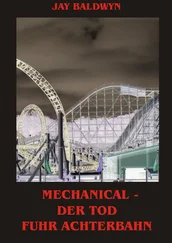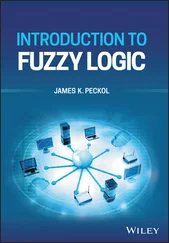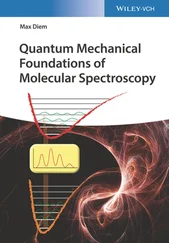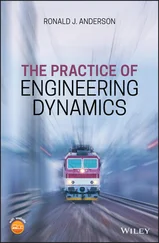Ronald J. Anderson - Introduction to Mechanical Vibrations
Здесь есть возможность читать онлайн «Ronald J. Anderson - Introduction to Mechanical Vibrations» — ознакомительный отрывок электронной книги совершенно бесплатно, а после прочтения отрывка купить полную версию. В некоторых случаях можно слушать аудио, скачать через торрент в формате fb2 и присутствует краткое содержание. Жанр: unrecognised, на английском языке. Описание произведения, (предисловие) а так же отзывы посетителей доступны на портале библиотеки ЛибКат.
- Название:Introduction to Mechanical Vibrations
- Автор:
- Жанр:
- Год:неизвестен
- ISBN:нет данных
- Рейтинг книги:4 / 5. Голосов: 1
-
Избранное:Добавить в избранное
- Отзывы:
-
Ваша оценка:
Introduction to Mechanical Vibrations: краткое содержание, описание и аннотация
Предлагаем к чтению аннотацию, описание, краткое содержание или предисловие (зависит от того, что написал сам автор книги «Introduction to Mechanical Vibrations»). Если вы не нашли необходимую информацию о книге — напишите в комментариях, мы постараемся отыскать её.
is a definitive resource. The text extensively covers foundational knowledge in the field and uses it to lead up to and include: finite elements, the inerter, Discrete Fourier Transforms, flow-induced vibrations, and self-excited oscillations in rail vehicles.
The text aims to accomplish two things in a single, introductory, semester-length, course in vibrations. The primary goal is to present the basics of vibrations in a manner that promotes understanding and interest while building a foundation of knowledge in the field. The secondary goal is to give students a good understanding of two topics that are ubiquitous in today's engineering workplace – finite element analysis (FEA) and Discrete Fourier Transforms (the DFT- most often seen in the form of the Fast Fourier Transform or FFT). FEA and FFT software tools are readily available to both students and practicing engineers and they need to be used with understanding and a degree of caution. While these two subjects fit nicely into vibrations, this book presents them in a way that emphasizes understanding of the underlying principles so that students are aware of both the power and the limitations of the methods.
In addition to covering all the topics that make up an introductory knowledge of vibrations, the book includes:
● End of chapter exercises to help students review key topics and definitions
● Access to sample data files, software, and animations via a dedicated website
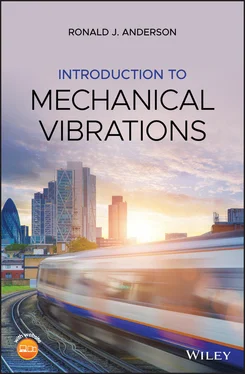




 ) at a specified angle,
) at a specified angle,  , thereby removing two of the unknowns and letting you solve for
, thereby removing two of the unknowns and letting you solve for  ,
,  and
and  .
. and
and  , and a group of variables (
, and a group of variables (  ,
,  ,
,  ) that are related by differentiation. Rather than counting five unknowns as we did earlier, we should say that there are three unknowns
) that are related by differentiation. Rather than counting five unknowns as we did earlier, we should say that there are three unknowns
 and
and  and we will be left with a single differential equation containing
and we will be left with a single differential equation containing  ,
,  , and
, and  . This nonlinear, ordinary differential equation is the equation of motion for the system. Given initial conditions for
. This nonlinear, ordinary differential equation is the equation of motion for the system. Given initial conditions for  and
and  , we can solve the equation of motion as a function of time and predict the angle, its derivatives, and the two normal forces at any time. The solution of nonlinear differential equations is not a trivial exercise but can be handled fairly easily using numerical techniques.
, we can solve the equation of motion as a function of time and predict the angle, its derivatives, and the two normal forces at any time. The solution of nonlinear differential equations is not a trivial exercise but can be handled fairly easily using numerical techniques. and adding the result to Equation 1.10multiplied by
and adding the result to Equation 1.10multiplied by  , giving
, giving
 during the motion. An expression for
during the motion. An expression for  can be found by multiplying Equation 1.8by
can be found by multiplying Equation 1.8by  and subtracting it from Equation 1.10multiplied by
and subtracting it from Equation 1.10multiplied by  . As a result, we could solve the differential equation of motion ( Equation 1.11) numerically and always have the ability to predict the two constraint forces. These forces provide useful design information that is difficult to get from the methods considered next.
. As a result, we could solve the differential equation of motion ( Equation 1.11) numerically and always have the ability to predict the two constraint forces. These forces provide useful design information that is difficult to get from the methods considered next. , a normal acceleration,
, a normal acceleration,  , and a centripetal acceleration,
, and a centripetal acceleration,  . Both
. Both  and
and  are due to the rates of change of the angle
are due to the rates of change of the angle  . Since the wire has constant radius,
. Since the wire has constant radius,  , we can immediately write
, we can immediately write  and
and  in the directions shown. Centripetal accelerations are of the form
in the directions shown. Centripetal accelerations are of the form  and
and  arises from the rotation of the wire with constant angular velocity
arises from the rotation of the wire with constant angular velocity  . The relevant radius here is
. The relevant radius here is  as shown. Therefore
as shown. Therefore  in the direction shown.
in the direction shown.


